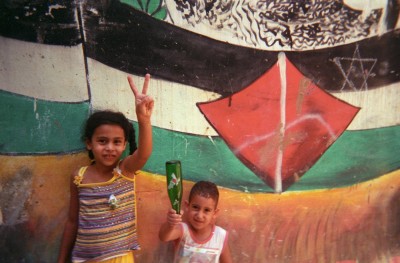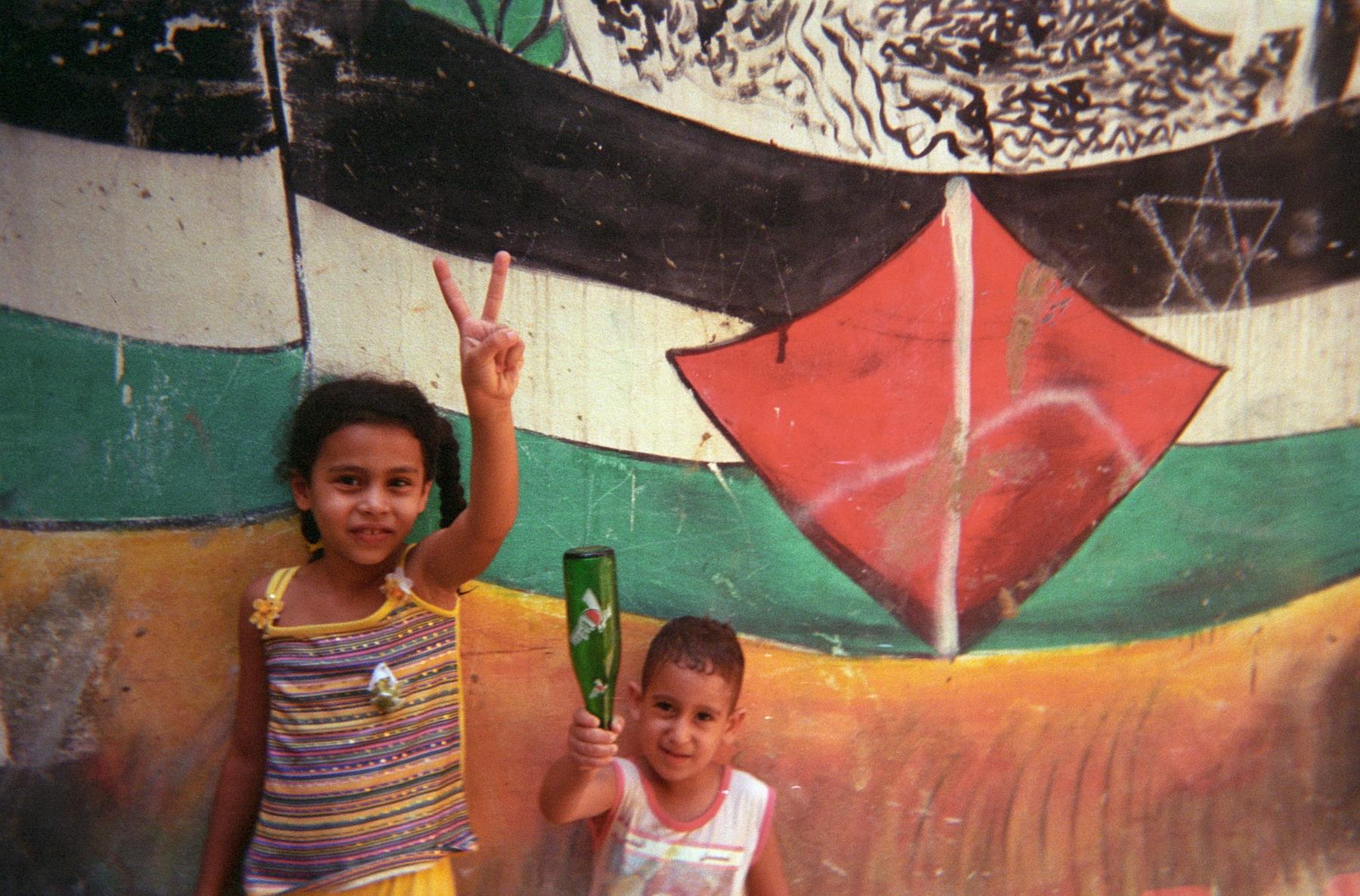 Lebanese photojournalist Ramzi Haidar was in Iraq covering the refugee crisis in 2003. Passing the time between assignments, Haidar talked and played with children who were curious about his equipment. Seeing what they saw and how they saw it, he became intrigued by the potential of child photographers to document the devastating circumstances in which they found themselves. Unlike adults who may have become jaded and cynical to a seemingly hopeless situation they did nothing to create, children are innately positive and open-minded.
Lebanese photojournalist Ramzi Haidar was in Iraq covering the refugee crisis in 2003. Passing the time between assignments, Haidar talked and played with children who were curious about his equipment. Seeing what they saw and how they saw it, he became intrigued by the potential of child photographers to document the devastating circumstances in which they found themselves. Unlike adults who may have become jaded and cynical to a seemingly hopeless situation they did nothing to create, children are innately positive and open-minded.
On returning to his native Lebanon, Haidar launched Zakira, Arabic for “memory,” as a non-profit organization dedicated to civic photography. Soon after, Lebanon was devastated by the Israeli invasion of 2006. Under these tragic circumstances, Zakira began work on a new project to document the destruction through the eyes of young Palestinian refugees throughout Lebanon. Over the course of 18 months, between November 2006 and March 2008, Zakira members and volunteers worked in each of Lebanon’s dozen Palestinian refugee camps with 500 children aged five to 12, teaching them the basics of photography and equipping them with disposable cameras. The aim of the project was to give a voice to these children, to stimulate their creative imaginations and raise awareness of their plight.
More than 400,000 Palestinian refugees currently live in Lebanon, most of them well below the poverty line. They are systemically stigmatized socially, politically, and economically. The Lebanese government prohibits Palestinians from owning property, working in a number of career fields, and accessing the Lebanese health and education systems. Indeed, Palestinians are not even allowed to move freely in and out of the camps. As a result, many Lebanese have never met their Palestinian neighbors and therefore treat them with suspicion and scorn. Zakira seeks to demystify and humanize the camps’ inhabitants as a step toward the recognition and restoration of their basic human rights.
Exhibition of Photos
Currently on display at the Jerusalem Fund Gallery in Washington, DC, the exhibition of the Lahza project – Arabic for “glimpse” – displays the works of the young Palestinian artists. In the introductory statement of the Lahza exhibition book, the Zakira team writes of the children, “Their perception is different from that of an adult. Nothing is forbidden and discovery is essential.” Viewing the photos on display, the spectator is invited to share in the way the children investigate their aesthetic surroundings, their relationship to the world outside the camps, their communities and themselves. They appear to be seeking images both truthful and fun, though sometimes it is difficult to see through the tragedy on the surface.
One photo, taken by nine-year-old Rawan Ahmed Shehadeh, shows a young girl peeking through a steel door riddled with bullet holes in Beirut’s Shatila camp. In her face is a reserved curiosity tinged with a subtle trace of a smile. She hadn’t yet been born when the now well-rusted bullet scars were made during the Sabra-Shatila massacre of 1982 carried out by Christian Phalangist militants under Israeli military cover, but the tragedy is nevertheless present in both the visual landscape and collective memory of the camp’s inhabitants. If the 9-year-old photographer isn’t already aware of what happened in his home more than two decades before, he will be. In the meantime, the rusty holes in the steel door possess a certain raw beauty, and the door itself frames his friend’s face, keeping most of the interior of her home, as well as her body, out of the viewer’s sight.
Another photo shows three boys in matching rubber boots surveying a pile of rubble in the middle of a desolate puddlescape. In the background are the hollow shells of former homes. The picture was taken by 12-year-old Subiyeh Ahmed Lubani in Nahr el-Bared camp outside of Tripoli. In 2007, indeed as the Zakira team was making its way camp-by-camp from the South to the North, the Lebanese Army laid waste to Nahr el-Bared in response to the growing presence of Fatah al-Islam militants inside the camp. Though most of the Islamist fighters were not Palestinian, and indeed had been allowed into the camps with weapons by the Lebanese Interior Ministry, the civilian refugee population was collectively punished for their actions. The attack displaced about 30,000 people from the camp, whose $445 million reconstruction is far from complete. As the boys in the photo examine the concrete and steel rods around them, the plastic flowers at their feet appear to be growing out of the ruins – either a poignant reminder that regeneration is possible or a dire statement that all hope is artificial.
Still, many of the photos have nothing to do with the ongoing tragedies facing life in the camps. Children are children after all, and as such they have an uncanny ability to show us beauty in unlikely places. Perhaps it exists in a small group of ducks whose bath is disturbed by a 10-year-old with a camera, or in the open drain splitting the ground in a narrow alleyway reflecting the sky. Much beauty is found in the depiction of the children themselves, who embody the imaginative fantasies of their photographers. A small girl stands atop a wall in front of the skyline of Ain El-Helweh camp; a little boy in a Mickey Mouse shirt grins beneath a mural of a stone-throwing woman whose body is the city of al-Quds (Jerusalem to Israelis).
The Project Continues
More than anything, these images are authentic. The Zakira team did teach the children some basics about photography and visual culture, but the images are the children’s own. At the end of the project, each child was given the prints of his or her photos along with a copy of the exhibition book. They remain in contact with Zakira through the General Union of Palestinian Women, with whom they worked in the camps. All proceeds of book and print sales go to the project and the children who participated.
Zakira has sponsored a second, follow-up project that follows Palestinian teenagers from the camps as well as Lebanese youth from surrounding communities, all of whom participated in three-month long photography workshops. “We found that this project had many tangible results,” relates Rima Abushakra, the Zakira associate who presented at the exhibition’s opening. “The students did in fact build relationships with one another and some of them pursued photography later. One girl was published several times in a national newspaper and several others now work at photo studios close to the camps.”
The Jerusalem Fund Gallery is located at 2425 Virginia Avenue NW in Foggy Bottom, just across from the Watergate complex.
